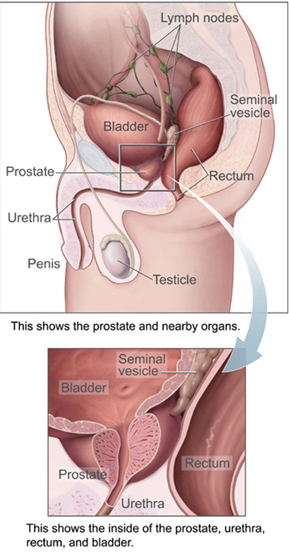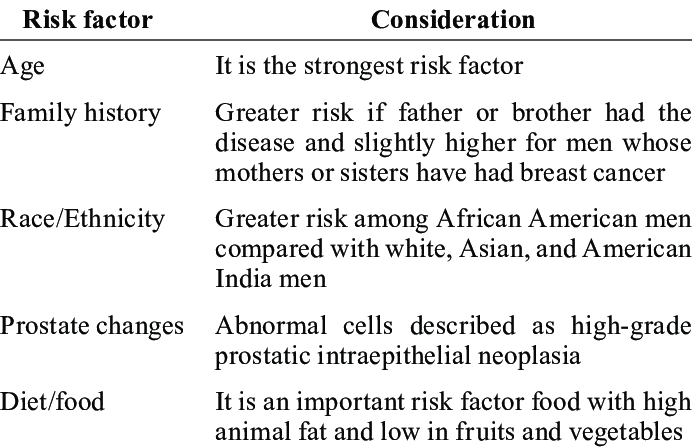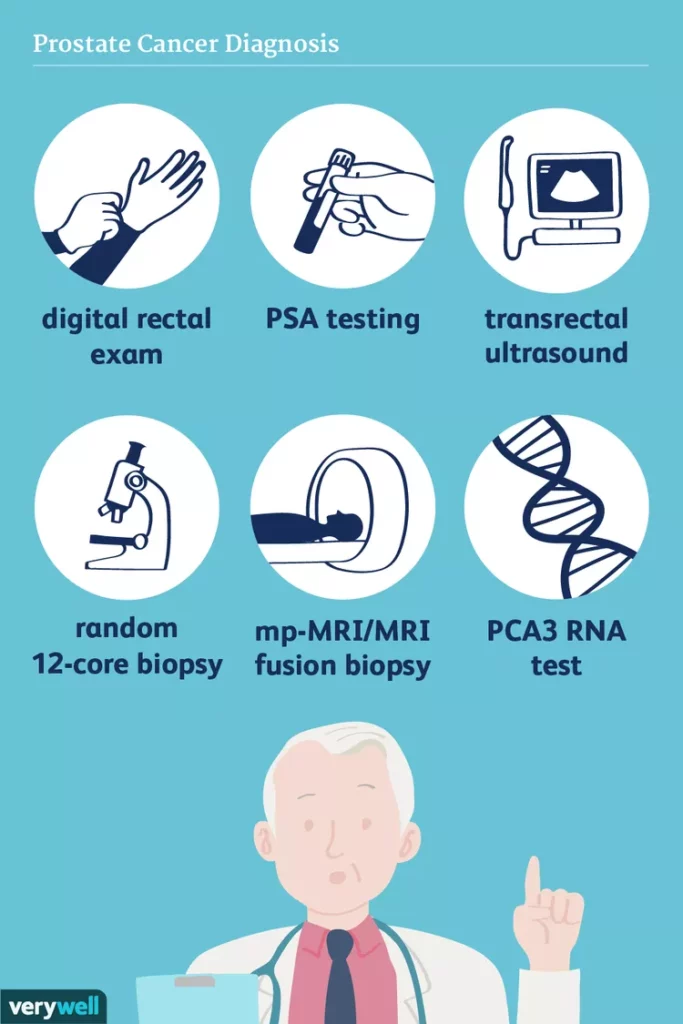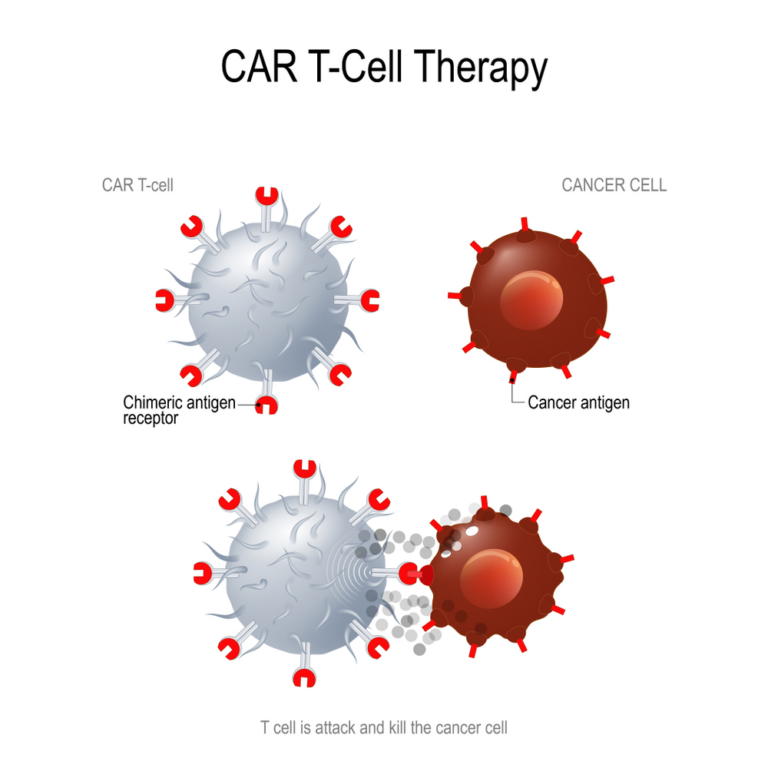Prostate Cancer Diagnosis
Table of contents
Prostate Cancer and its diagnosis is a cause for concern within the male population. It is mostly considered a sensitive topic, but this article talks about prostate cancer. We discuss what it is, how it starts, the types, its diagnosis, its treatment and its management.
What is the prostate gland?
It is a male reproductive organ. The prostate is a small, soft organ, about the size of a tennis ball and smooth to the touch. It is located deep in the pelvis, below the bladder and in front of the rectum. One can feel it by inserting a finger into the rectum and pressing it toward the body. It has various functions, but the chief among them is the production of seminal fluid. It also helps in the regulation of urine flow and hormone production.

What is Prostate Cancer?
Prostate cancer is a very common type of cancer that happens in males. It can grow slowly and can either be benign or malignant. Prostate cancer can grow so slowly that it will not cause any significant problems in the lifetime of the affected male. On the other hand, it can also be malignant and spread outside the prostate gland, and this type is quite deadly. The survival rate of this cancer is greatly improved by early detection and treatment. Not all growths in the prostate are cancerous; some other conditions that can cause similar symptoms like prostate cancer are benign prostatic hyperplasia and prostatitis.
What are the risk factors of prostate cancer?
It is more common in older males, especially men over the age of 55. It can be said that the chances of this disease increase with age, with up to 60% of prostate cancer cases found in men above 65 years. Some other risk factors include
- Ethnicity (men of African origin are twice as likely to develop this disease)
- Obesity
- Smoking
- Family history of prostate cancer
- Family history of other types of cancer like breast etc.

What are the symptoms experienced with prostate cancer?
In the early stages, prostate cancer may have no symptoms at all. Most of the symptoms occur when the cancer has advanced, and some of them include
- Blood in the urine
- Pain when urinating
- Weight loss
- Erectile dysfunction
- Weakness in the force of urinating
- Numbness of the leg
- Painful ejaculation
- Pain in the bones of the chest, lower back or hip
- Incontinence
What are the causes of prostate cancer?
While the cause is not very clear, however health experts believe that cancer begins when cells in the prostate develop changes in their DNA. These changes cause these cells to grow and divide faster than normal and continue living when other normal cells have died. They quickly form a tumor which can then invade other nearby tissues or even metastasize and spread to distant parts of the body. Experts also believe that an individual is at least twice as likely to acquire this disease if a brother or father has suffered it before.
How is prostate cancer detected?
This is done by regular prostate screening by health professionals. It is advised for men above the age of 45 to discuss the screening with their doctors, more especially men of African origin or ones that have a history of prostate cancer in their family. The prostate screening tests may include:
- Digital rectal exam – this is done by inserting a gloved and lubricated finger into the rectum to examine the prostate. If any abnormality is detected, further tests are then ordered.
- Prostate-specific antigen (PSA) test– this is done by examining the blood of the individual. The blood is examined for PSA, and if a higher-than-normal level is detected, it might indicate an infection, enlargement or cancer. This test is not definitive and is usually used with other tests to diagnose prostate cancer.
How is prostate cancer diagnosed?

If the screening has found an abnormality, further tests are then recommended in order to determine the problem. Some of the tests include:
- Collecting a sample of the prostate tissue (biopsy) – this is done to examine if the prostatic cells are cancerous. This is usually carried out with a thin needle that is inserted into the prostate to collect tissues. The tissue sample is then taken to a laboratory and examined to determine whether cancer cells are present.
- Ultrasound – this is done with transrectal ultrasound, a small probe like a cigar. It is inserted into the rectum, where it gives a picture of the prostate gland.
- Magnetic resonance imaging (MRI) – this is recommended in some cases. It provides a more precise view of the prostate gland. It may also help in determining a treatment plan for the disease.
After the confirmation of the presence of cancer, the next step is to determine its stage and aggressiveness. This is done in the lab, where the cancer cells are examined to determine how much they differ from normal prostate cells. The methods employed to accomplish this include:
- Gleason score – this is the most common scale used in grading. It combines two numbers and can range from 2 (non-aggressive) to 10 (very aggressive). Most cancers assessed with this test range from 6-10. With 6 being low-grade prostate cancer and 10 being high-grade cancer.
- Genomic testing – this also analyses the cancer cells to determine the particular mutations that are present. It can also give information on the prognosis of the case, but this test is not widely adopted. However, they might provide information on the therapy to be adopted by the doctors.
After a diagnosis has been made, the doctor then determines the stage of cancer. Tests are carried out to determine if cancer has spread to other organs or body parts. Some of the tests include:
- PET scan
- MRI
- CT scan
- Bone scan
- Ultrasound
The information helps in determining the stage of cancer and the treatment plan to be adopted. Prostate cancer, like other cancers, can be designated by roman numerals I-IV. The lowest stage I indicate that the cancer is still restricted to the prostate gland. By stage IV, cancer has grown and spread to other organs.
How is prostate cancer treated?
The treatment depends on the severity of cancer. Some people do not require treatment because of the slow growth rate of cancer. Some of the techniques used in managing prostate cancer include:
- Active surveillance – this monitors prostate cancer that has not started showing any symptoms. Usually employed when the cancer is small and slow growing and not likely to spread. It involves PSA testing, rectal examination and MRI scans done at intervals.
- Watchful waiting – this is similar to active surveillance but is used in older patients. It also involves regular PSA Tests and check-ups but with less frequency than in active surveillance. It is done when the cancer is assumed not going to be an issue in the lifetime of the patient.
- Surgery – also known as a prostatectomy, it is done curatively. It involves the surgical removal of the entire diseased prostate. It can be done with laparoscopy with a small abdominal which is less invasive than open radical prostatectomy that requires a larger abdominal incision.
- Radiation therapy – This is used when cancer has been detected early. It can also be used when surgery has been ruled out. Radiation can be done internally or through external beam radiation. Internal radiation is called brachytherapy, and it involves placing radiation seeds inside the prostate. This helps in limiting the radiation effect on other organs. The second method of radiation is external radiation therapy, where strong X-ray beams are delivered to cancer.
- Hormone therapy – this is done with the aim of depriving cancer of some necessary hormones it needs to grow. Androgen deprivation therapy is employed in order to slow down testosterone production hence affecting the growth rate of the cancer. It is usually used along with radiation therapy and sometimes chemotherapy. It can be administered with oral tablets or by injection. Removal of some or all of the testicles may be preferable in some instances, although this is not commonly practiced anymore.
- Systemic therapy – this is used when the cancer has spread to other parts of the body outside the prostate. They can be done by chemotherapy, hormone therapy or immunotherapy.
- Focal therapy – this involves focusing the treatment on only the areas affected by the cancer. It is usually done when the cancer has not spread to other parts of the body. It can involve cryotherapy, laser ablation, high-intensity focused ultrasound and photodynamic therapy.
- Palliative care – this is done to improve the quality of life by addressing some of the symptoms of cancer. In some cases, it also helps in slowing down the growth of the cancer. It aims to relieve some of the pain, manage some of the other symptoms and help with other side effects. Palliative care may include drug therapies, chemotherapy or radiation therapy.
FAQ
Some prostate cancer treatments can affect various parts of the body. It can affect the bladder, sphincter muscles, and even the erectile nerves. Some of the potential issues include
1) Incontinence
2) Erectile dysfunction
3) Infertility
4) Impotence
There is no known prevention of prostate cancer, and most individuals usually develop it as they age for no discernible reasons. It is, however, easier to handle when detected early, so healthcare providers usually advise individuals with risk factors to take steps to reduce their risk. Some of these steps include
1) Regular prostate screenings
2) Regular exercise
3) Quit smoking
4) Eating healthy
5) Maintenance of a healthy weight
This is not always possible to predict because the course of cancer can suddenly go from mild to aggressive. The prognosis is usually person-specific and is determined by a lot of factors. The prognosis would depend on the type of cancer, the test results, age, fitness, health levels, medical history and cancer’s growth rate. Prostate cancers are often slow-growing, and aggressive types are still usually slower-growing than other cancer types. If detected early and treatment is started, prostate cancer has one of the highest five-year survival rates.
“Medical Advice Disclaimer:
DISCLAIMER: THIS SITE DOES NOT PROVIDE MEDICAL ADVICE OR OPINION:
The information provided in this article or website by way of text, illustration, graphics, Images or any other form in this article or website is provided for informational purposes only. No information or material provided on this site is meant to be a substitute for a professional medical advice. Please refer to your family doctor or specialist in that field for any medical condition, diagnosis and treatment. Do not delay in contacting a professional on account of something you have read in this article or on this website.”
The information provided in this blog is for educational purposes only and should not be considered as medical advice. It is not intended to replace professional medical consultation, diagnosis, or treatment. Always consult with a qualified healthcare provider before making any decisions regarding your health. Read more







